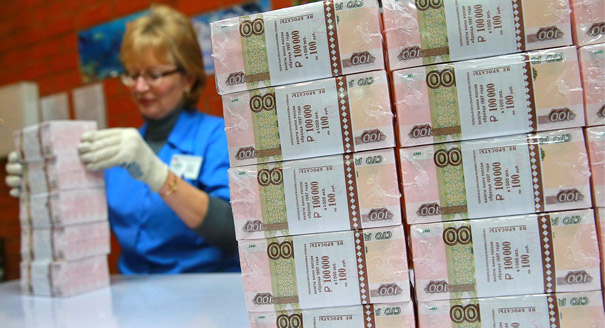Even in the best of years, the passage of the state budget prompts anxiety among Russia’s chattering classes. But in years like the current one, we seem to take it as a given that we are doomed—that all of our funds will soon be found to have been pilfered by some tiresome kleptocrat who lacks so much as a good cover story. The media tend to interpret non-events as signs of our inevitable downward economic spiral.
Take, for example, the reduction of the Health Ministry’s budget from 274 to 189 billion rubles in the new draft budget, which has given rise to panicky headlines like “Government to Cut Healthcare Spending by a Third.” Many seem to have forgotten that for over a decade, the state has channeled the lion’s share of medical funding through the Federal Compulsory Medical Insurance Fund, not the Health Ministry. The fund’s budgets for 2016 and 2017 are 1,688 and 1,692 billion rubles, respectively. This means that healthcare spending may fall slightly in real terms, but not by a third.
The struggles of the Reserve and National Welfare funds provoke a similar sort of angst—and are, much like the fabled healthcare sequester, rather exaggerated. The Reserve Fund presently holds 2 trillion rubles (about $32.2 billion), 1.15 trillion of which will go toward financing deficits in 2017 under the new budget. While the state may have to dip into the fund before the end of 2016, it is highly unlikely that it will withdraw more than 500 billion rubles.
Meanwhile, the fund’s ruble value (and our budget revenues) will increase on the back of a stronger dollar and euro, which means the fund could survive into 2018. In short, the Reserve Fund is doing what former finance minister Alexey Kudrin had in mind when he set it up in the early 2000s: cushioning the economy from the shock of falling oil and gas prices and buying it time to adjust to new realities.
Then there is the National Welfare Fund: its assets currently amount to 4.6 trillion rubles, although nearly a third of these are illiquid (Vnesheconombank credits, Ukraine’s default loan payments, and other national treasures). The government plans to withdraw 660 billion rubles from the fund in 2017 and 1.14 trillion rubles in 2018, leaving about 1.5 trillion rubles in liquid assets. A weaker ruble will boost these assets, and no other injections are planned for the near future. So even according to a fairly pessimistic prognosis, a certain cushion will remain.
Yet Russia’s key financial “reserves” are its relatively low sovereign debt. External debt totals just 6 percent of GDP, while internal debt (not counting guarantees) is about 10 percent. For comparison, in 2000, the debt was worth 160 percent of GDP. The timeline for debt repayments is fairly forgiving, bonds are long-term, and the rates reasonable.
As the economy has achieved relative stability, investors are rediscovering Russia’s government bond market, which features enticingly high real interest rates. It would be remiss not to capitalize on this, and the Ministry of Finance is rarely remiss, so it has extensive plans for borrowing on the domestic and international markets. Net new debt on the government bond market in 2017 is anticipated at 1.05 trillion rubles, almost double the figure from 2016. Factoring in a planned repayment of 829 billion rubles for next year, total expected bond placement is 1.9 trillion rubles, which is not an unreasonably large amount assuming a budget revenue of 14 trillion rubles.
The government also plans to borrow $7 billion abroad. 2016 saw significant demand, largely among domestic investors, for U.S. dollar-denominated government bonds. And in another hopeful sign, international rating agencies are upgrading their outlook for Russia: Fitch raised its outlook on the sovereign credit rating to “stable” on October 14, and S&P did the same last month.
Russia is indeed eating through its reserves and growing its debt, but not at a rate that threatens its economic stability. Most of the adjustments taking place under the new budget are fairly superficial—the state is in essence transferring money from one pocket to another. Unlike 1997, when Russia last had an explicit sequestration policy, the current crisis poses almost zero chance of an old-fashioned default.
This is not to say policymakers should be complacent. Russia’s federal budget faces long-term pressure from a deficit-plagued pension system, outsized spending on the security services and military, an unstable tax base, and gaps in regional budgets that will need to be patched up. Hidden tax hikes (through fines and harsher enforcement) also raise doubts about the government’s upbeat plans for budgetary consolidation. These are the problems that should be worrying us—not the fate of the reserve funds, which were made for times like this.



